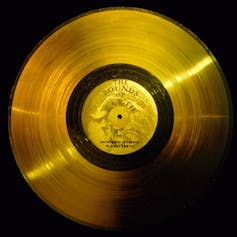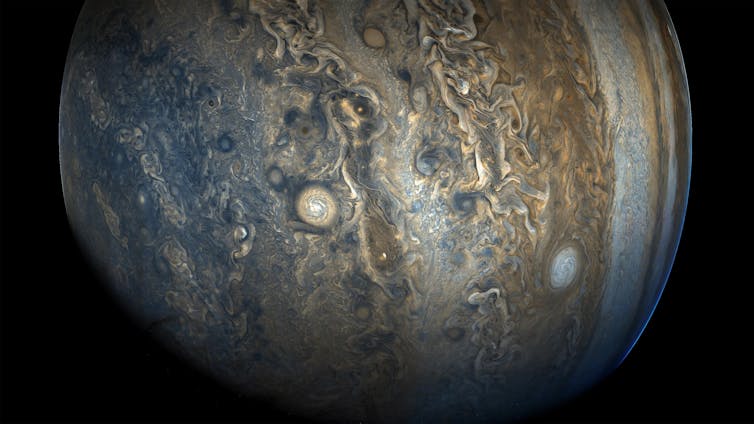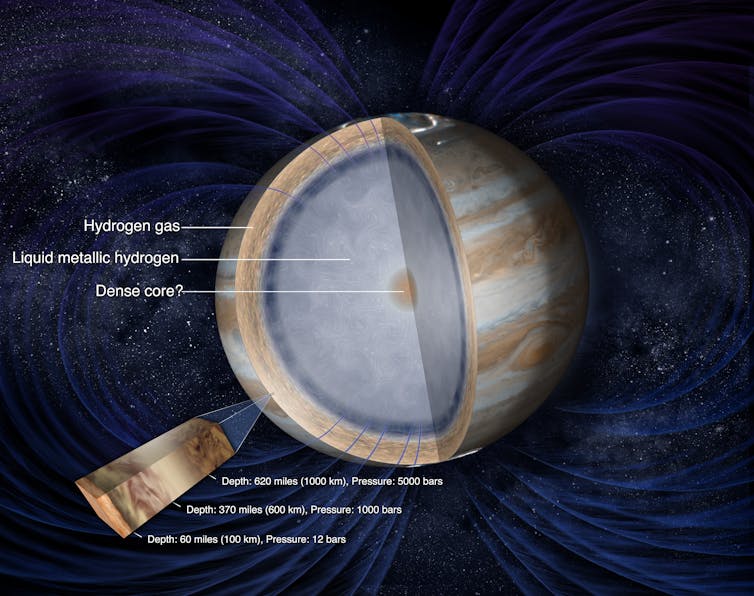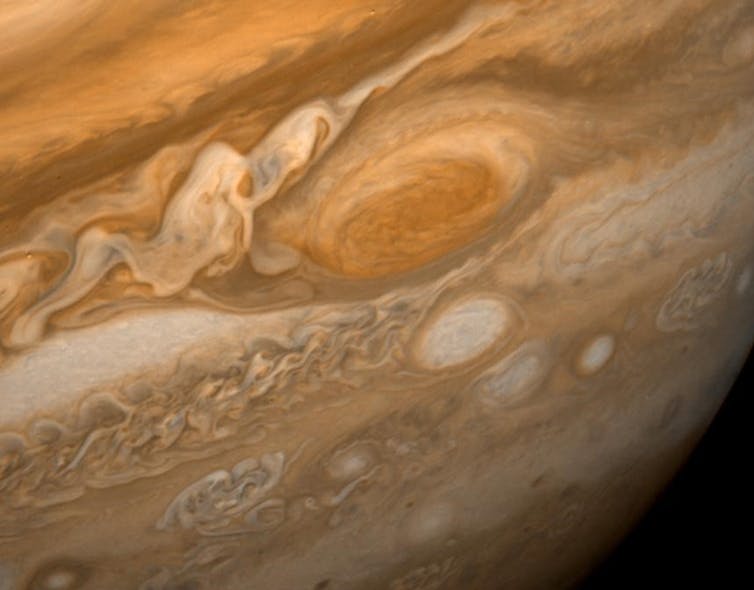
- J1407b is a giant exoplanet with a massive ring system. Scientists think the rings are 200 times larger than Saturn’s.
- The rings may be rotating backward, according to a new study from researchers in China.
- J1407b itself may be a rogue planet, drifting freely in space instead of orbiting a star. But astronomers still don’t know for sure.
A planet with rings that rotate backward?
J1407b is an enigmatic object that astronomers first detected in 2007. Scientists say it’s likely a huge exoplanet that may have an enormous ring system dwarfing the rings of Saturn. But the exact nature of J1407b isn’t certain even now. Various studies have tried to model the ring system, but there are still many questions. In fact, astronomers are still debating whether J1407b is even orbiting the star J1407 (also known as V1400 Centauri) or if it’s a rogue planet freely drifting in space. On October 29, 2024, yet another new paper entered the discussion. Researchers in China said the planet’s giant rings may be rotating backward.
Kiona Smith wrote about the new study for Inverse on October 30, 2024. Wenshuai Liu, a physicist at Henan Normal University in China, published the preprint version of his paper (not yet peer-reviewed) on arXiv, last revised on October 27, 2024.
The immense ring system of exoplanet J1407b
Astronomers first found J1407b back in 2007, when automated telescopes detected a series of dimming events of the star that lasted for 56 days in April and May. Although the event occurred in 2007, astronomers didn’t find out about it until a few years later. Mark Pecaut, a former graduate student under the supervision of Eric Mamajek at the University of Rochester, discovered the unusual light curve toward the end of 2011.
J1407 is a young star with a mass similar to the sun, lying 451 light-years away. During the eclipse event, the star’s brightness dimmed – varying on a nightly basis – by as much as 95%. Researchers calculated that a massive planet (or brown dwarf?) with a ring system 0.6 AU across was responsible. One AU (astronomical unit) is the average distance from the Earth to the sun. So the rings, if real, were much larger than Saturn’s, about 200 times the diameter. The planet itself was likely tens of times the mass of Jupiter.
Unfortunately, astronomers saw no other eclipses of the star since then. So either the planet has a super-wide orbit – still in the process of completing one orbit since 2007 – or the planet is actually rogue (not bound to any star) and just happened to pass in front of the star at that time from our viewpoint on Earth. Steven Reider then calculated that the planet might be in an elliptical orbit around the star instead of a more circular one.
Read astronomer Matthew Kenworthy’s overview of the J1407b saga, as of 2020
Do the rings of J1407b rotate backward?
This is where the new study comes in. As Smith wrote in Inverse:
Liu simulated how a giant planet and its ring system might form and evolve around a star like V1400 Centauri, which is about the mass of our sun but a few billion years younger. Their models suggest that as giant planets coalesce out of the gas and dust swirling around the star, interactions between those planets can not only nudge some of them into weird, stretched-out orbits, but also set their rings spinning in the wrong direction.
If so, then J1407b’s rings may indeed by rotating backward, that is, in the opposite direction the planet itself rotates. Reider had also posited something similar in 2016.
If the rings orbit around J1407b in the same direction the planet orbits around the star (prograde motion) then the rings should fall apart within only a few orbits. But if the rings rotate in the opposite direction (retrograde motion) then they could hold together for much longer.

Is J1407b a rogue planet?
Meanwhile, the exact nature of J1407b itself is still debated. It might be a massive planet, or it could be a brown dwarf orbiting the star J1407. But there’s another possibility as well.
It’s possible it’s a rogue planet (or brown dwarf). That would mean it’s drifting all by itself in space, not bound to any star. But if so, then its transit of the star was just a fluke, from our viewpoint on Earth. Astronomers haven’t yet seen it transit the star again, so it’s plausible it was just a one-time event. In addition, another survey in 2019 didn’t find any trace of J1407b at all.
It’s also possible, however, that J1407b is in a very wide orbit around the star. In that case, it would take longer for it to complete one orbit and transit the star again. But that brings up another problem. According to other studies, every time the planet passed closest to the star, in an elliptical orbit, the gravity of the star should strip the rings away.
Backward rotation could protect the rings
There may be a solution, however. Previous studies suggested that if the rings rotated backward, then they could survive the closest approaches to the star. But why, or how, would the rings orbit backward? Liu’s study said the planet may have been “herded” by gravity into a long, narrow orbit after it formed. As Smith wrote:
According to Liu’s simulations, as giant planets coalesce out of the gas and dust swirling around the star, the newly forming planets’ gravity pushed and pulled at one another, jostling the young planets into different orbits, something very similar to the kind of gravitational nudging that sent Jupiter migrating inward during the turbulent early years of our own solar system. Along the way, J1407b got herded into a long, narrow orbit. The complex ways fluids (including flowing clouds of dust in space) interact eventually caused the planet’s little disk of material to start flowing, or orbiting, in the opposite direction from the planet’s rotation and its path around the star.
Is this the answer to the mystery of J1407b? It’s too soon to know yet. First, astronomers need to locate the elusive world again.
Bottom line: The giant exoplanet J1407b is thought to have a massive ring system much larger than Saturn’s. A new study suggests the rings may orbit the planet backward.
Source: Retrograde Ring Formed Around Eccentric Extrasolar Giant Planet
Read more: Huge distant planet has rings 200 times larger than Saturn’s
Read more: Old photos provide clues about a planet with giant rings
The post Do the giant rings of exoplanet J1407b rotate backward? first appeared on EarthSky.
from EarthSky https://ift.tt/xAhNdnu

- J1407b is a giant exoplanet with a massive ring system. Scientists think the rings are 200 times larger than Saturn’s.
- The rings may be rotating backward, according to a new study from researchers in China.
- J1407b itself may be a rogue planet, drifting freely in space instead of orbiting a star. But astronomers still don’t know for sure.
A planet with rings that rotate backward?
J1407b is an enigmatic object that astronomers first detected in 2007. Scientists say it’s likely a huge exoplanet that may have an enormous ring system dwarfing the rings of Saturn. But the exact nature of J1407b isn’t certain even now. Various studies have tried to model the ring system, but there are still many questions. In fact, astronomers are still debating whether J1407b is even orbiting the star J1407 (also known as V1400 Centauri) or if it’s a rogue planet freely drifting in space. On October 29, 2024, yet another new paper entered the discussion. Researchers in China said the planet’s giant rings may be rotating backward.
Kiona Smith wrote about the new study for Inverse on October 30, 2024. Wenshuai Liu, a physicist at Henan Normal University in China, published the preprint version of his paper (not yet peer-reviewed) on arXiv, last revised on October 27, 2024.
The immense ring system of exoplanet J1407b
Astronomers first found J1407b back in 2007, when automated telescopes detected a series of dimming events of the star that lasted for 56 days in April and May. Although the event occurred in 2007, astronomers didn’t find out about it until a few years later. Mark Pecaut, a former graduate student under the supervision of Eric Mamajek at the University of Rochester, discovered the unusual light curve toward the end of 2011.
J1407 is a young star with a mass similar to the sun, lying 451 light-years away. During the eclipse event, the star’s brightness dimmed – varying on a nightly basis – by as much as 95%. Researchers calculated that a massive planet (or brown dwarf?) with a ring system 0.6 AU across was responsible. One AU (astronomical unit) is the average distance from the Earth to the sun. So the rings, if real, were much larger than Saturn’s, about 200 times the diameter. The planet itself was likely tens of times the mass of Jupiter.
Unfortunately, astronomers saw no other eclipses of the star since then. So either the planet has a super-wide orbit – still in the process of completing one orbit since 2007 – or the planet is actually rogue (not bound to any star) and just happened to pass in front of the star at that time from our viewpoint on Earth. Steven Reider then calculated that the planet might be in an elliptical orbit around the star instead of a more circular one.
Read astronomer Matthew Kenworthy’s overview of the J1407b saga, as of 2020
Do the rings of J1407b rotate backward?
This is where the new study comes in. As Smith wrote in Inverse:
Liu simulated how a giant planet and its ring system might form and evolve around a star like V1400 Centauri, which is about the mass of our sun but a few billion years younger. Their models suggest that as giant planets coalesce out of the gas and dust swirling around the star, interactions between those planets can not only nudge some of them into weird, stretched-out orbits, but also set their rings spinning in the wrong direction.
If so, then J1407b’s rings may indeed by rotating backward, that is, in the opposite direction the planet itself rotates. Reider had also posited something similar in 2016.
If the rings orbit around J1407b in the same direction the planet orbits around the star (prograde motion) then the rings should fall apart within only a few orbits. But if the rings rotate in the opposite direction (retrograde motion) then they could hold together for much longer.

Is J1407b a rogue planet?
Meanwhile, the exact nature of J1407b itself is still debated. It might be a massive planet, or it could be a brown dwarf orbiting the star J1407. But there’s another possibility as well.
It’s possible it’s a rogue planet (or brown dwarf). That would mean it’s drifting all by itself in space, not bound to any star. But if so, then its transit of the star was just a fluke, from our viewpoint on Earth. Astronomers haven’t yet seen it transit the star again, so it’s plausible it was just a one-time event. In addition, another survey in 2019 didn’t find any trace of J1407b at all.
It’s also possible, however, that J1407b is in a very wide orbit around the star. In that case, it would take longer for it to complete one orbit and transit the star again. But that brings up another problem. According to other studies, every time the planet passed closest to the star, in an elliptical orbit, the gravity of the star should strip the rings away.
Backward rotation could protect the rings
There may be a solution, however. Previous studies suggested that if the rings rotated backward, then they could survive the closest approaches to the star. But why, or how, would the rings orbit backward? Liu’s study said the planet may have been “herded” by gravity into a long, narrow orbit after it formed. As Smith wrote:
According to Liu’s simulations, as giant planets coalesce out of the gas and dust swirling around the star, the newly forming planets’ gravity pushed and pulled at one another, jostling the young planets into different orbits, something very similar to the kind of gravitational nudging that sent Jupiter migrating inward during the turbulent early years of our own solar system. Along the way, J1407b got herded into a long, narrow orbit. The complex ways fluids (including flowing clouds of dust in space) interact eventually caused the planet’s little disk of material to start flowing, or orbiting, in the opposite direction from the planet’s rotation and its path around the star.
Is this the answer to the mystery of J1407b? It’s too soon to know yet. First, astronomers need to locate the elusive world again.
Bottom line: The giant exoplanet J1407b is thought to have a massive ring system much larger than Saturn’s. A new study suggests the rings may orbit the planet backward.
Source: Retrograde Ring Formed Around Eccentric Extrasolar Giant Planet
Read more: Huge distant planet has rings 200 times larger than Saturn’s
Read more: Old photos provide clues about a planet with giant rings
The post Do the giant rings of exoplanet J1407b rotate backward? first appeared on EarthSky.
from EarthSky https://ift.tt/xAhNdnu




























